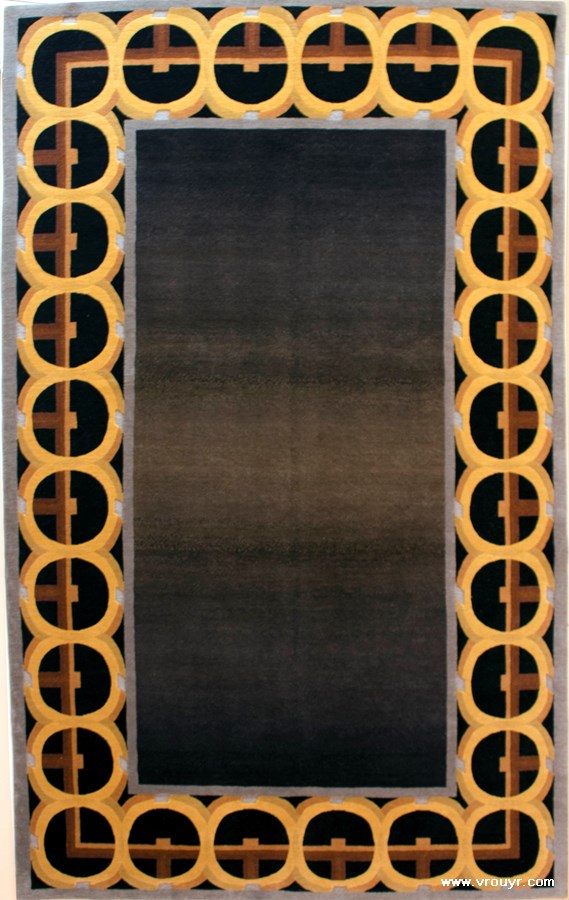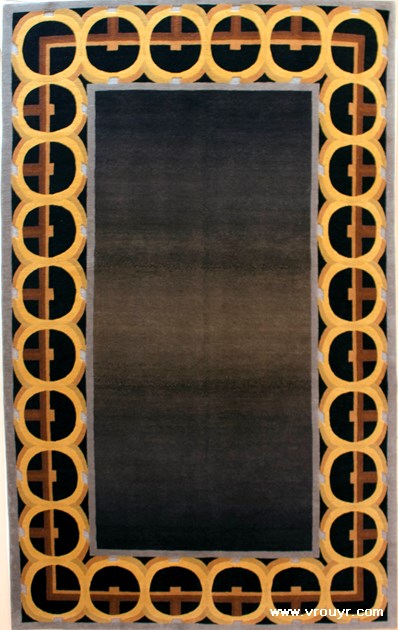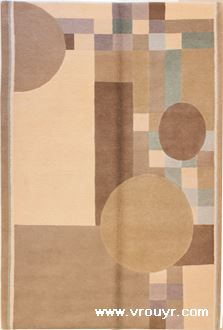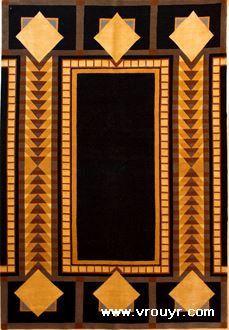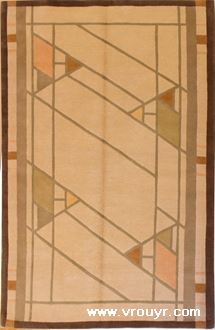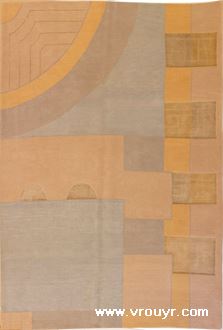Imperial Circles by Frank Lloyd Wright
ref: flw Imperial Circles
warp and weft: cotton
pile: wool and silk
Nepal
Coulours may appear different on the website than in reality. All mentioned prices and sizes are indicative and not binding. Possibly some rugs that are still online, are not available anymore in the showroom.
"But in its scale, and in its play with surprise elements, the Imperial Hotel is completely Japanese. Wright was apparently so struck by the smallest of Japanese things that he made everything in the Imperial Hotel tiny...There were little terraces and little courts, infinitely narrow passages suddenly opening into large two- or three-storey spaces;...And there were many different levels, both inside the rooms and outside the buildings, including connecting bridges between the two long, parallel wings of guest-rooms. Finally, Wright achieved something almost unheard of in hotel design: in this most standardized of all fields of cubicle architecture he succeeded in making almost every guest-room different from every other." — Peter Blake. Frank Lloyd Wright: Architecture and Space. p 69-72.

Frank Lloyd Wright

YOU MAY ALSO LIKE

 Visit Vrouyr2
Visit Vrouyr2



 favourites
favourites

